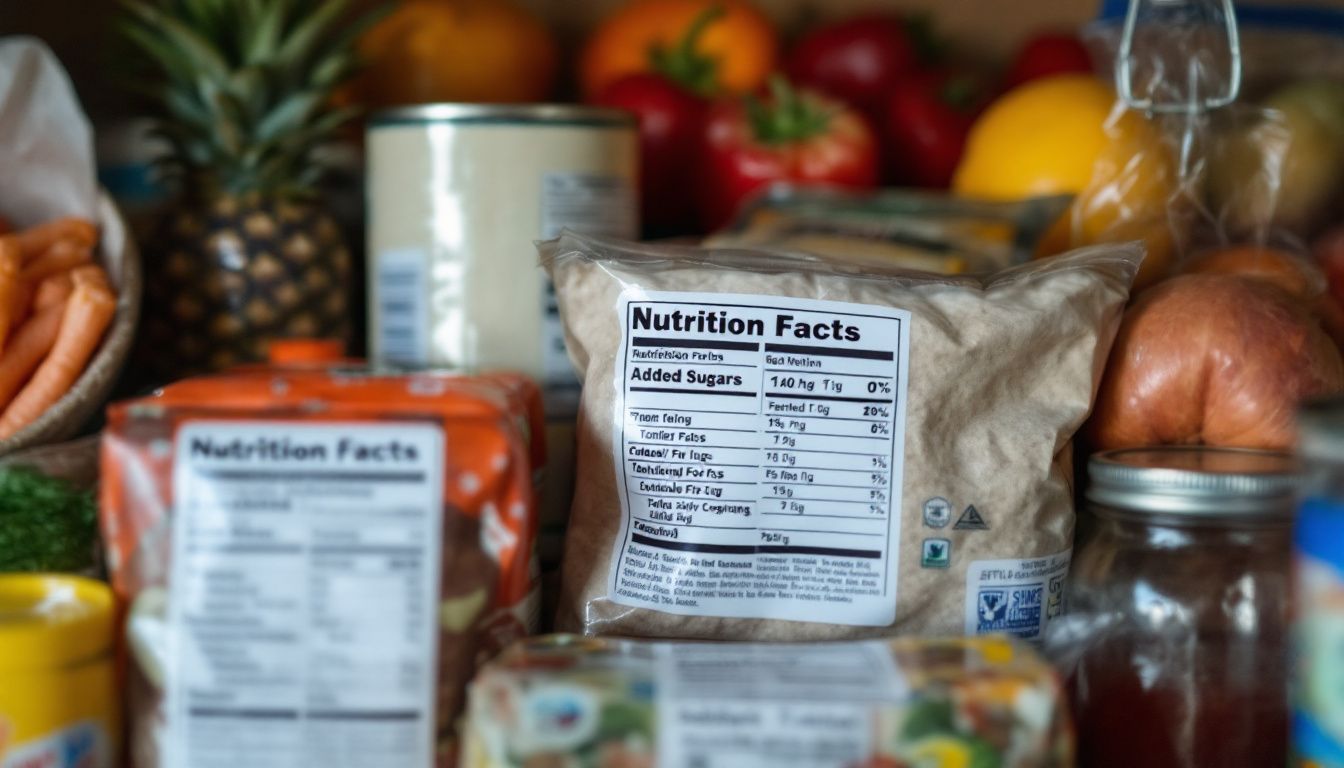Do you ever wonder why food labels now call out “added sugars“? These are the extra sugars put in during food processing—not what’s naturally in fruits or milk. Knowing this helps you make smarter choices for your health and stick to dietary recommendations.
Thank you for reading this post, don't forget to subscribe!Keep reading to learn how these changes affect your diet!
Key Takeaways
- New food labels highlight added sugars, which are extra sugars added during processing like table sugar, syrups, and honey.
- The FDA recommends no more than 50 grams of added sugars per day based on a 2,000-calorie diet—less than 10% of daily calories.
- Eating too much added sugar can lead to weight gain, heart disease, and type 2 diabetes. Labels now show % Daily Value (%DV) for clarity: low is 5%, high is 20%.
- Americans eat about 13% of their daily calories from added sugars—above the recommended limit.
- Clearer labels help people choose healthier items with less sugar, encouraging better diets and smarter shopping habits.
What Are Added Sugars?
 Added sugars are sweeteners put into foods and drinks during preparation or processing. These include table sugar, brown sugar, honey, syrups like high-fructose corn syrup, and concentrated fruit or vegetable juice.
Added sugars are sweeteners put into foods and drinks during preparation or processing. These include table sugar, brown sugar, honey, syrups like high-fructose corn syrup, and concentrated fruit or vegetable juice.
Terms ending in “-ose,” such as fructose or dextrose, also fall under this category.
Common sources of added sugars are sugary drinks, baked goods, jams, desserts, and energy drinks. Even single-ingredient items like maple syrup or honey become “added sugars” when added to processed foods.
The FDA highlights these on labels to help consumers see how much extra sugar they’re eating daily—leading to the next discussion about why it matters!
Why Are Added Sugars Highlighted on New Food Labels?
Added sugars now appear on new nutrition labels because they affect health. Unlike naturally occurring sugars in fruit and milk, added ones are put into packaged foods and drinks during processing.
They add extra calories without essential vitamins or minerals, leading to “empty calories.” Consuming too much leads to weight gain and diseases like type 2 diabetes or heart disease.
These sugars come from sources such as white sugar, high fructose corn syrup, syrups like maple syrup, sweetened drinks, jellies, and preserves.
The Food and Drug Administration (FDA) set a Daily Value of 50 grams for added sugars based on a 2,000-calorie diet. This means less than 10% of daily calorie intake should come from these sugars—about 200 calories per day.
Labels also show the percent Daily Value (%DV) for easier understanding: low is 5% DV or less; high is 20% DV or more. Highlighting this helps consumers choose healthier foods with fewer empty calories while focusing on their overall nutrition information goals.
How the New Labels Impact Consumer Choices
The updated Nutrition Facts label helps shoppers pick healthier options. Highlighting added sugars shows how much extra sugar is in foods and beverages, like sugary drinks or processed foods.
Many Americans eat 13% of their daily calories from added sugars—more than the recommended 10%. New labels make it easy to compare products and choose lower-sugar alternatives.
A study found that up to 87% of people prefer having added sugar information on labels. These consumers often buy items with less sugar, improving their diets. Food manufacturers may also create healthier recipes to meet demand for better choices.
Clearer serving sizes and daily values give more control over food consumption too… Let’s look at why these changes focus so much on health risks tied to excess sugar!
Conclusion
New food labels make it easier to spot added sugars. They empower you to make healthier choices and stick to dietary guidelines. By focusing on your whole diet, not just sugar, you can improve your health over time.
These changes give clear info—helping protect against issues like heart disease and weight gain. Small changes today lead to big benefits tomorrow!
